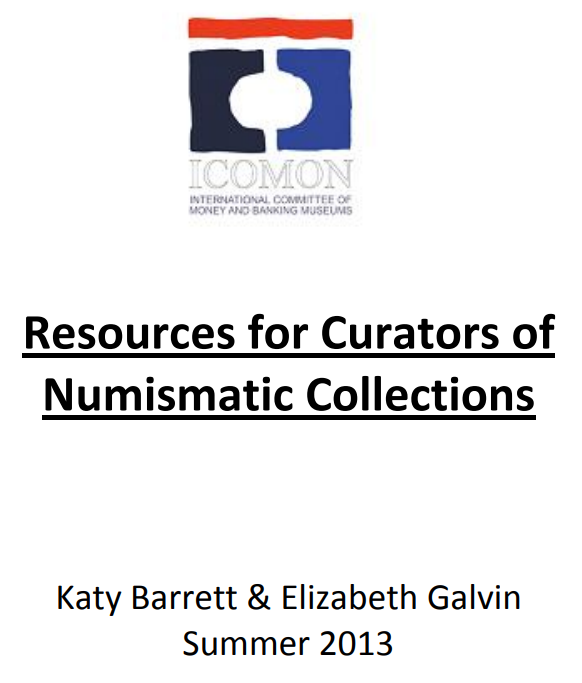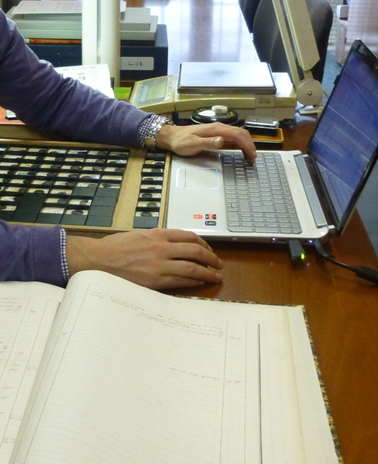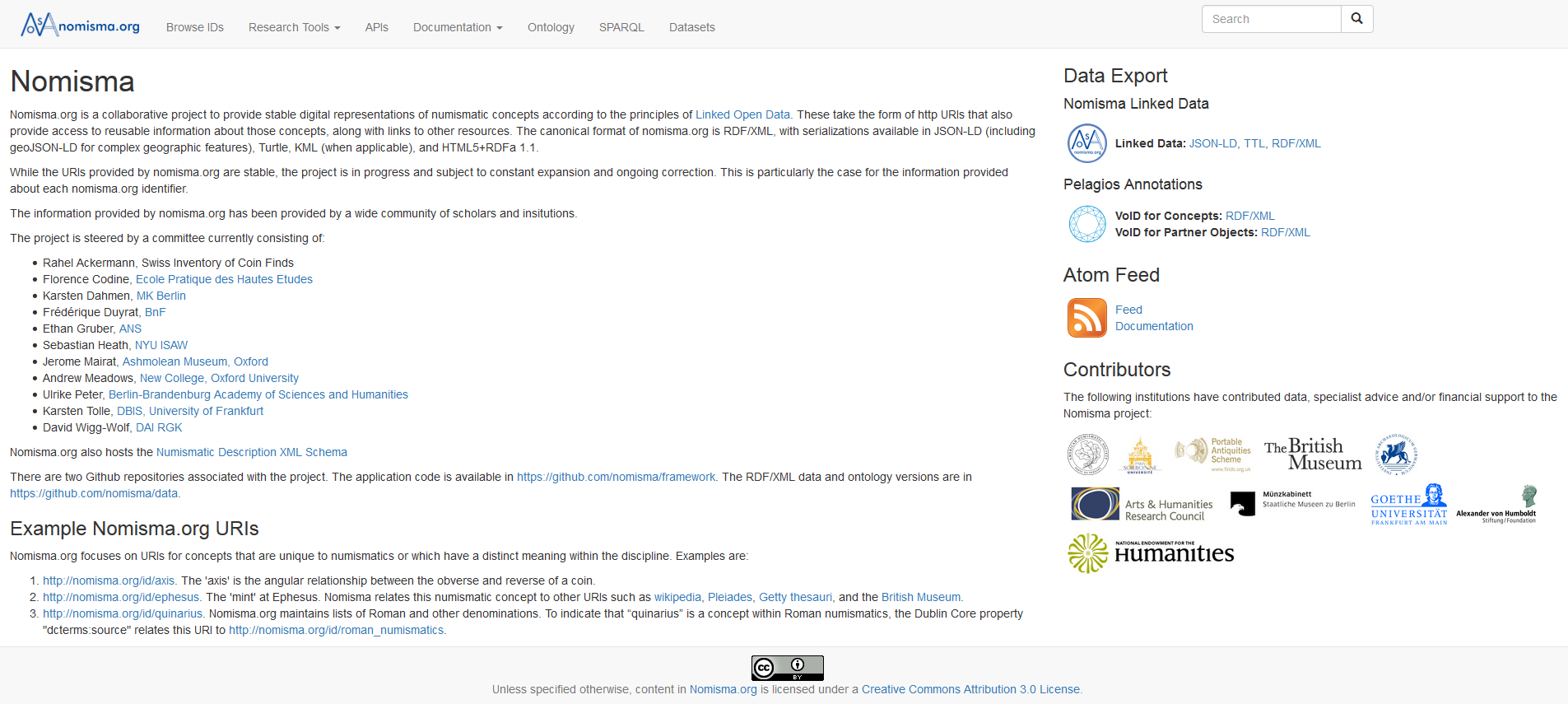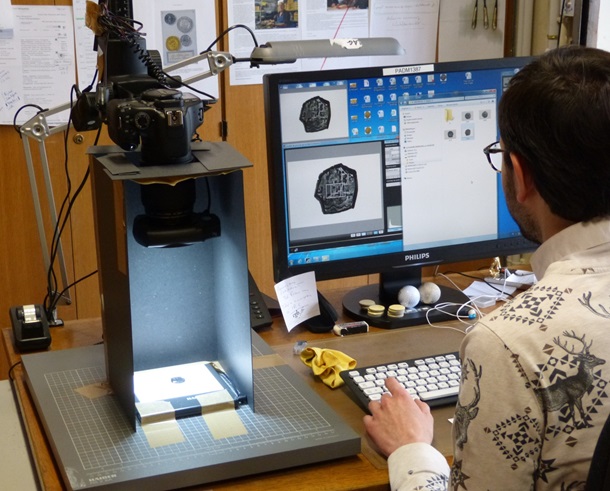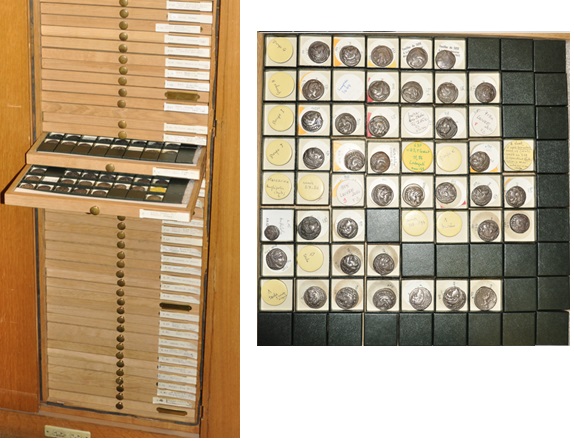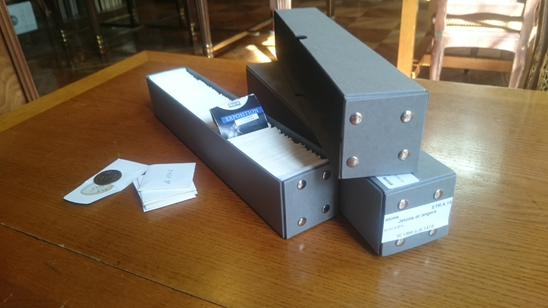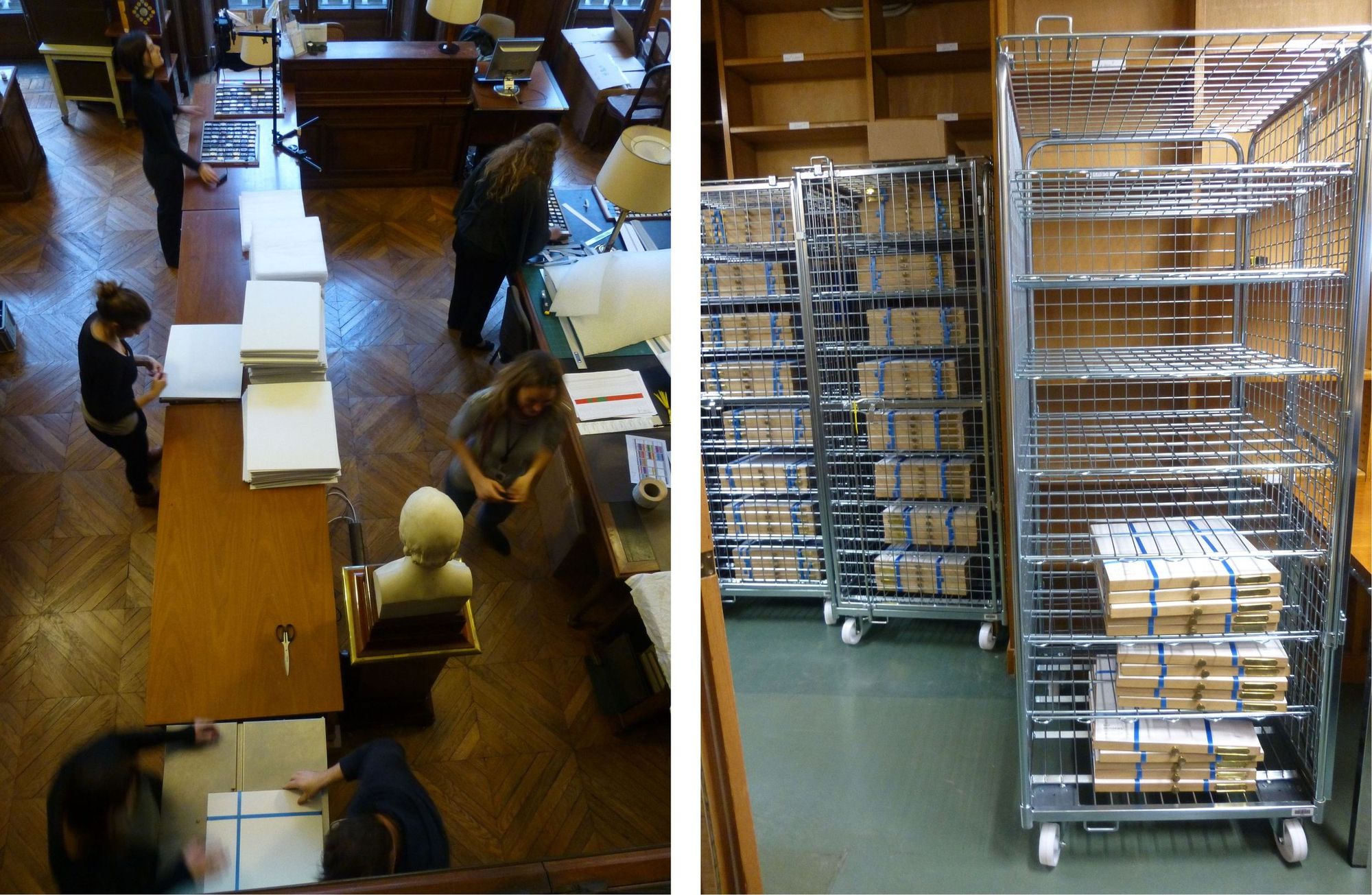How to catalogue, digitise, and move a collection of coins Simple tips
This page works as a completement to these guidelines. It aims at providing simple tips for institutions curating coins, on the basis of the experience acquired by the Département des Monnaies, médailles et antiques of the Bibliothèque nationale de France (BnF). It encompasses all categories of coins, ancient, medieval and modern.
Other “coinlike” objects – medals, tokens, weights – can also be catalogued, digitised and moved according to the same principles but some require adaptations.
How to catalogue coins?
Standardised data
It is possible to start cataloguing a coin collection quickly, to create an inventory of a collection, without necessarily aiming at the production of a scientific catalogue. However basic, such a description needs to be clean and follow some rules.
- A spreadsheet is the easiest way of starting:
- It helps to create structured and clean data.
- It can be converted into text or uploaded to most databases easily.
- It offers the possibility of duplicating and sorting data sets ad infinitum.
- The standardisation of the vocabulary is easy to verify.
- Each type of information needs to appear in a separate field. If there are several data of the same category, the field can be repeated.
For example, a plated coin will have two different metals, in two separate fields. One for the core metal, the other for the surface metal sheet.
The choice of fields in a database or columns in a spreadsheet will vary by category of coinage, and by the needs of the collection to be catalogued. However, a basic set of concepts used by many major collections, and developed through discussions among a number of them, has been published as the Numismatic Description Standard (NUDS). An overview of this can be found on Greekcoinage website, while a full description of the XSD schema is available on Nomisma website.
Here is a spreadsheet model, based on that used by the BnF, and conforming to NUDS that you can use as is, or tailored according to your needs:
Format excel pour le catalogage de monnaies
Nomisma
Numismatic concepts and their relationships are now described by a collaborative project, based on NUDS, under the patronage of the International Numismatic Council: Nomisma. The more a collection follows nomisma standards, the more interoperable and open it will be the day it is digitised and available online.
You can find a synthesis of nomisma vocabularies to describe a coin here.
Nomisma provides lists of controlled vocabularies for such categories as denominations, mints and authorities (e.g. rulers and magistrates) that you can use for a number of periods. Those for ancient numismatics are already rather complete, but it is in constant evolution and other periods are growing.
Digitisation
It is particularly useful to have a coin collection digitised, and this does not require a lot of material or skill. The collection at the BnF has an ongoing programme of digitisation, based on the following organization and assumptions.
- One curator in charge of:
- General management of the team,
- Control of coherence of the spreadsheets with the list of coins (data quality),
- Control of quality of the pictures and their file-naming.
- A photographer. According to our experience in Paris one photographer working 5 days a week, 8 hours a day, can shoot:
- c. 600 pictures (i.e. 300 coins) a day
- Average: 10,000 images per month.
- Always us the same light orientation: either a circular flash attached to the lens or a fixed flash can be used. At the BnF, we used a single fixed flash always lighting the coin from the top of the type.
- The flash might need to be full power for bronze but mitigated for shiny silver coins and gold coins. It can be done with a simple screen made of a translucent plastic sheet between the flash and the coin, or by using a flash whose power can be adapted.
- The coin is placed on a glass panel 5 cm above the surface of the table to avoid shadows.
- The final images will have to be life size (1/1); it is possible to add a scale next to the coin.
- Two images per coin (obverse and reverse) but you may need more if the collection contains 3D objects (Hacksilber for example) or coins with an inscribed edge…
- 300 dpi images are enough for security photos but it is worth making higher quality shots for other uses. Think of the storage capacity you will need for the whole collection.
- After shooting, the image should be cropped, so that there is no background left.
- protection against misplacement, loss, or even theft since only an image provides a definitive identity to a coin and can prove the ownership by an institution.
- conservation problems unnoticeable with the naked eye are discovered with images (traces of earth, wax, corrosion).
- Enlargement also permits the better reading of minute types.
- The images and coin description can be made available online and offer a public access to objects otherwise kept in cabinets.
- most of the research programs in the discipline are now based on collections available online. With research programs also come the funding to improve the data online: the very short descriptions of the inventories can be improved thanks to this type of funding.

How to curate and move a coin collection?
Storage
- In drawers, with either trays or boxes to separate the coins and their labels (most collections do not physically mark their coins: they are often too small for marking or the marking hinders the reading of the type and legend).
Advantage: easy access to each coin, no contact between the coins, clear classification, the risk of mixing up the coins is low, easy to add a coin as long as some spare room is planned in the drawer.
Drawback: place consuming, requires careful handling.
- In boxes, with each coin placed vertically in a small envelope with its label.
Advantage: saves space, cheap, adapted to archaeological material.
Drawback: easy to mix up the envelopes, the coins rub each other, if the envelopes are in plastic they need to be punctured to avoid oxidation.
- In albums, with the coins in separate plastic pouches.
Advantage: very cheap, clear classification.
Drawback: not recommended for long term storage for conservation reasons; to add a coin, it is necessary to move the others.
Attention should be paid to packaging materials: avoid young wood, varnish not suitable for metal conservation, non-neutral paper or cardboard, and any packaging that is tightly sealed.
The room where the coins are kept must have a stable atmosphere with preferably a low hygrometry (around 40%) and a temperature around 18°C. Sudden changes in hygrometry are likely to trigger corrosion. A slightly high but stable hygrometry is preferable to big variations.
To move a collection
Collections in boxes are easy to move as long as their content is firmly wedged and cannot move during transport. Albums need to be wrapped and protected from external pressure.
Drawers require more caution. One solution is to:
- Fill each drawer with several layers of polyester wadding cut at the dimensions of the drawers.
- Close the drawer with a cardboard cut at its exact dimensions, pressing the polyester wadding against the coins and preventing them to moves.
- Strap the drawer with a strapping machine.
- Then the drawers can be strapped in groups of five and placed in rolling cabinets to be moved always horizontally.
If there is a great number of drawers to move, it is possible to organize a packaging line with four positions:
- One camera at the beginning of the line will provide images of the content of the drawers before they are packed, useful in case of an accident.
- The second person puts the layers of polyester wadding in the drawer.
- The third person adds the cardboard.
- The last one straps the drawer and its filling and places it in the rolling cabinet.
Such a team was able to pack and move the 450,000 coins of the BnF collection in several weeks in 2015-2016.

